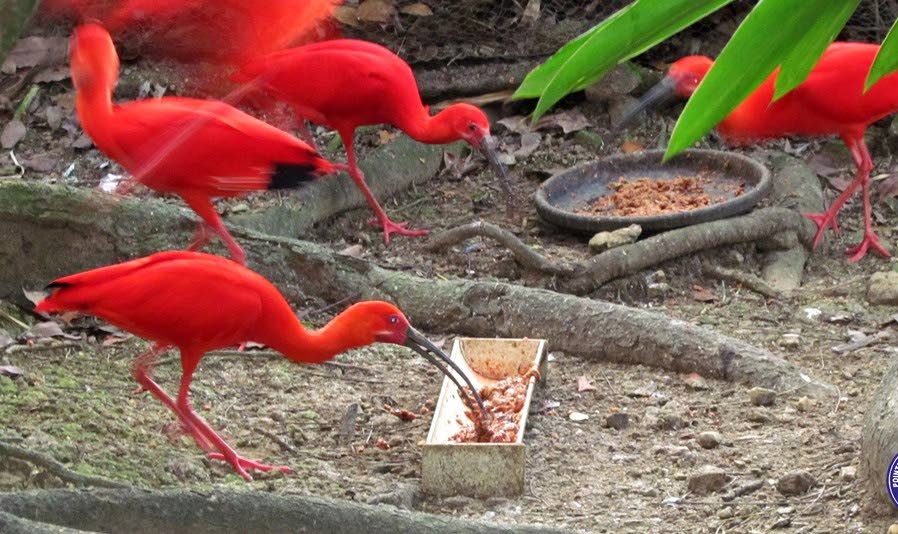The story of the Scarlet Ibis

The Ibis family is an ancient group. Fossil record goes back some 60 million years, to the Eocene period and their record in Human history has been traced back to 5000 years.
Ancient Egyptians venerated the Old World Ibis as sacred and part of their religious and written records. In fact the Latin word has Greek origins which mean “religious worship/sacred bird”. The birds were often mummified and buried in temples with the Pharaohs.
There are 33 species of this family in the world, which include both the Ibises and the Spoonbills.
Of all the species of Ibises, one of the most widely distributed is the family of the Glossy Ibis, found in both the Old and New worlds– commonest in the New World is the White Ibis and the most beautiful is the Scarlet Ibis. Scarlet Ibis are highly gregarious birds roosting in large colonies which sometimes contain more than 30,000 breeding pairs. There is a yearly migration from Venezuela from October to March.
The home and main breeding grounds for our Scarlet Ibis is in the Caroni Wetlands and our birds migrate all along our west coast and also inland to the Caroni Savannah lands, particularly in the rainy season.
These sensitive birds are very nervous and wary; easily driven away from their breeding sites by human intrusion. The Scarlet Ibis have been grossly affected by hunting/poaching and ecological changes resulting from drainage of freshwater marshlands and infiltration of saltwater into their freshwater feeding areas.
There was no breeding of our national bird, the Scarlet Ibis for a number of years in the 1960s.
In June 1991, Scarlet Ibis at the Pointe-a-Pierre Wildfowl Trust nested and bred for the first time. On July 11, 1991, the first Scarlet Ibis chick was born. Since then breeding at the Trust continued with a number of releases into existing wetland habitats. This breeding and translocation programme at the Trust continues.
The Scarlet Ibis easily ranks as one of Trinidad’s most extraordinary natural treasures and valuable tourist attractions. Visitors come from all over the world eager to witness the unforgettable spectacle of these beautiful birds soaring, in the last rays of the sunlight as the sky reddens at sunset in the Caroni Swamp. After experiencing this soul-stirring event deep in the mangrove swamp, who would believe that these beautiful creatures, and invaluable asset to us in so many ways, would be slaughtered by humans!
The Caroni Wetlands, main breeding grounds for our Scarlet Ibis has been officially protected for years. In 1953 it was made a Wildlife Sanctuary. In 1987 it was made a protected area under the Forest Act. In 2005 it was declared a Ramsar Site, protected under a government and international treaty.
There must be a concerted effort to stop the slaughter of the Scarlet Ibis and enforce the many existing laws that protect them.
Molly R Gaskin is the president of the Pointe-a-Pierre Wildfowl Trust
www.papwildfowltrust.org


Comments
"The story of the Scarlet Ibis"